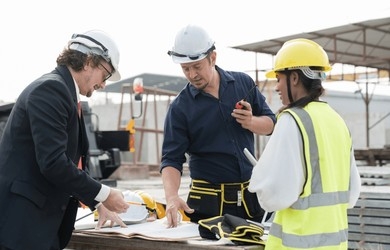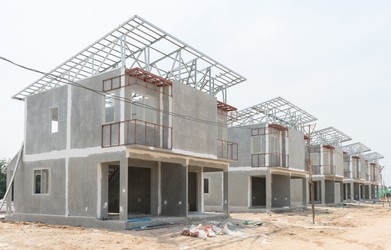
The use of Precast Concrete is way more beneficial than traditional ways. There is hell to do on a construction site for the engineers, architects, and laborers. Moreover, managing materials such as cement, sand, and other stuff is another big task. During all this hustle, mixing and producing concrete is one of the significant tasks. It takes a lot to find the ratio of elements to add to the mixture and then the mold or frame preparation.
Moreover, concrete casting, the last but most challenging task that requires more men to do the job, can be budget-heavy for the constructor. On the other hand, if you use precast services for roofs, walls, concrete pipes, and precast, it will be more beneficial for you. However, please read the article to know more about it.
What are Precast Concrete Structural Building Systems?
Precast concrete structures pour concrete into a mold to give it a shape. For example, they put the concrete mixture into any structural material in a suitable environment. Once cured, they remove the mold and transfer it to the construction area. Then, this structure is used as walls or roofs. Cranes usually lift these structures to take them to the construction site. However, sometimes, they prepare the structures at the construction site by using different molds and using them on the spot. By using this conventional way, there is no transportation process required.
Material Used in Precast Concrete
Most used materials in precast concrete remain the same; however, the ratio of materials changes according to the construction type and client’s requirements. The materials of the concrete are given below:

- Cement: It is the most essential material of concrete—the amount of cement used according to the standards of construction parameters. However, you must see the quality and type of cement you need to make concrete.
- Water: The ratio and purity of water are the keys to making a superior concrete material according to the design.
- Supplementary Cementitious Material: These can be industrial by-products or sometimes natural materials. The quantity and type of these materials change the nature of cement and concrete.
- Aggregate: Aggregate is chosen based on the design of the construction. Moreover, the factors considered for aggregate are color, durability, and construction size.
- Waterproofing admixtures: They save the roofs and walls from water damage; constructors add these materials to the client’s requirements.
- Oxides: To give the concrete different colors, they add oxides to it. To add colors, oxide pigments are used.
- Steel Tendons: These are the wires, bars, and strands used to create strong adhesion in the concrete. It is better to use dust-free tendons as it provides more strength.
Advantages of using precast concrete in construction
High Quality:
In the precast factory, the concrete undergoes various tests for quality assurance. They constantly check the ratio of material at the manufacturing site. They prepare the mold or form to give it a proper shape. There, they have the laboratory items to check the chemical and physical composition of the material. And they see that the lab sees that the mixture is well mixed and equal to all levels. They use quality control techniques to measure all these things.
Reduces the Construction Time:
On the construction site, it reduces the work burden and time of the workers. The engineers can focus on more important stuff like surveys and earthwork. Furthermore, when a prepared precast concrete reaches the construction site, it optimizes the work speed. Moreover, the work continues simultaneously without getting delayed or waiting for concrete preparations.
Prestressed Concrete:
To enhance the overall strength and load-bearing ability of the concrete, you can use prestressed concrete. It can be used for precast concrete walls and precast concrete steps. For any large construction project, it reduces the overall cross-section size of load-bearing members, which reduces load-bearing costs. Moreover, precast plants provide models with different sizes and shapes; engineers and architects can use these models according to their flexibility.
Provide a safe environment at the construction site:
The Precast Panel Detailing procedure requires a lot of different equipment and materials that can be harmful and difficult to handle. A primary advantage of using precast concrete is that it saves construction sites from cutters and unnecessary materials. Otherwise, the place would be overcrowded. Moreover, a prepared precast concrete only requires an installation process once at the construction site, which means only a few people will require you.
Durability:
Precast concrete is a long-lasting material that requires less maintenance. They are usually made of lab-tested components. Its corrosion-resistant ability makes it ideal for walls, pillars, and culvert construction. Similarly, the precast Concrete Walls and Precast Concrete steps are highly strong and long-lasting.
Provides Sustainable Construction:
Its procedure and usage are environment-friendly for both long-term and short-term plans. The water usually used in precast concrete is recycled; moreover, it reduces the overall cost of energy burning. Using natural aggregates such as sand, rocks, gravel, and water makes it sustainable for the planet. It is an unignorable factor that it causes no environmental pollution,
Types of precast concrete elements
Wall panels
- Solid Walls: 6 to 12 inches wall used to stop heat and block temperature variations in the building. The walls do not have insulation; they need an internal finishing insulation.
- Sandwich Walls: It can be structural or architectural, created by rigid insulation sandwiched between two layers of concrete. However, it cane the thickness of the insolation can be changed to give it the necessary R-value.
- Lite Walls: These are the light walls usually used in parking structures. These are like shear walls. However, these walls have openings in them to let light come inside. These light walls provide a sense of safety and transparency.
- Thin-Shell and GFRC: A thin layer of 1.5 to 3 inches makes thin wall panels. It is usually connected to a backup system made of steel framings.
Beams and columns - Continuous beams: With two or more supports to reinforce the beam. These supports are used under and between the beams and are vertical. These are cheaper than other beams.
- Supported Beams: They have supports at both ends of the beam and are usually used in general construction.
- Fixed Beams: Beams that are fixed on both ends and do not allow bending are called fixed beams. Mainly, they are used in trusses.
- Overhanging Beams: They have supports typically at one and the middle of the beam. It is a combination of a cantilever and supported beams.
- Cantilever Beam: These beams are accessible at one end and fixed at the other. Moreover, the fixed end is mainly attached to a column or wall.
Slabs
Slabs are two-dimensional structural planes. These slabs are used on floors, roofs, and ceilings. These slabs provide a flat surface, a covering shelter, and transfer the load by bending in one or two directions.

The manufacturing process of precast elements
Design and engineering
Engineers read the designs and blueprints of the buildings to estimate the ratio of concrete material you need to make. Then, find the exact materials and oxides necessary for your construction.
Formwork preparation
It is the most crucial part of concrete making. It tells what type of shape your concrete will get at the end. They also make frames for concrete pipe and precast.
Concrete casting
Creating structures of the final product involves mixing the concrete and putting it into a mold or frame to get the final shape.
Modern Techniques and Technologies in Precast Concrete Systems
3D printing of precast elements
Now, engineers can design concrete pipes and precast them by using 3D animations and printers. This method of automotive processing saves time and energy. It has broadened the spectrum of precast services.
Automation and robotics in manufacturing
Using only the required amount of materials is an environmentally friendly technique because it stops the factory from producing pollution of unwanted wasted materials. And for that purpose, the exact amount of materials must be known to the constructor, which is only possible with computers and robots.
Conclusion
In a Nutshell, this service is quite helpful for modern construction. It provides quality work, increases efficiency, optimizes the speed of the project, and, more importantly, is environmentally friendly. No doubt, using precast cement will enhance the productivity of your construction project as you will get precast concrete steps and precast concrete walls with high quality.
Read More: What are the 7 principles of Architecture?






